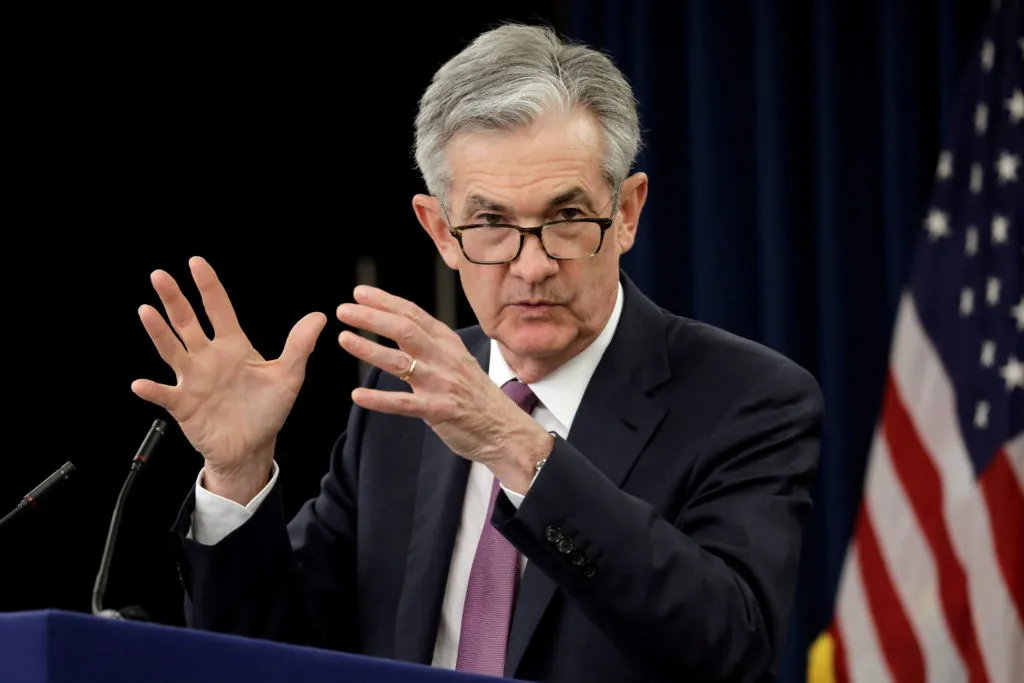A divided Federal Reserve appears to be edging closer to its first interest rate cut in months, with Chair Jerome Powell on Friday hinting at the possibility of a reduction in September.
However, the bigger question looming over financial markets is what happens after that initial move. That debate is already underway and could intensify well before the Federal Open Market Committee (FOMC) convenes on Sept. 16-17 in Washington. For now, there’s no assurance that a September cut will lead to a series of reductions.
According to Stephen Stanley, chief U.S. economist at Santander US Capital Markets LLC, opinions inside the Fed remain sharply split: one group favors multiple cuts, another leans toward just a single adjustment, and others oppose cutting at all. “The September message will probably be, ‘One cut and we’ll see what happens,’” Stanley predicted.
Speaking at what is likely his final address at the Fed’s annual Jackson Hole symposium in Wyoming, Powell acknowledged that the labor market is showing increasing signs of strain.
“The shifting balance of risks may warrant adjusting our policy stance,” Powell said, signaling that the Fed could move soon.
The long-awaited hint of an impending cut came as the White House continues to apply relentless pressure for lower borrowing costs. President Donald Trump dismissed Powell’s remarks as “too late,” but markets welcomed the tone. Stocks jumped and Treasury yields fell as investors priced in a more dovish path ahead.
Despite opening the door to a rate cut, Powell was careful to note that inflation risks persist. He highlighted the impact of tariffs, saying their effects on consumer prices are “now clearly visible.” He also warned that “the upward pressure on prices from tariffs could spur a more lasting inflation dynamic” than previously expected.
Matthew Luzzetti, chief U.S. economist at Deutsche Bank, said Powell’s language suggests a gradual approach: “Given the two-sided risks and divergent views on the committee, the easiest path is a slow pace of rate cuts, starting next month and becoming more data-dependent beyond that.”
The Fed cut rates by a full percentage point last fall but has kept policy steady this year to avoid reigniting inflation amid trade-related price pressures. Inflation remains above the Fed’s 2% target.
Now, with labor market risks increasing and tariff-related uncertainty lingering, policymakers appear ready to consider at least one reduction in September as a compromise measure. Powell refrained from committing to a timeline but noted that the job market is in a “curious kind of balance” due to slower supply and demand for workers. He also acknowledged the lack of clarity around how tariffs will ultimately impact prices yet indicated that waiting for perfect certainty may not be an option.
Powell, whose term as chair ends in May, faces a delicate balancing act as he tries to forge consensus among officials holding sharply different views. Projections from June showed most policymakers anticipating at least two cuts this year, while a sizable minority favored no changes at all.
Recent statements confirm that divide. Two Fed governors Christopher Waller and Michelle Bowman opposed the decision to hold rates steady in July, citing weakening job growth. They were vindicated when July employment data came in far below expectations.
At the same time, hawkish voices remain. Cleveland Fed President Beth Hammack said she would not support a rate cut if the FOMC met today, while Kansas City’s Jeffrey Schmid went further, suggesting rate hikes shouldn’t be ruled out entirely.
A middle ground has also emerged: some officials back a “move and wait” approach. Atlanta Fed President Raphael Bostic said last week his strategy would be to cut once, then pause to gauge the economic impact.
Still, after July’s dismal jobs report, many policymakers worry time is running out. Minneapolis Fed President Neel Kashkari noted that acting now even if it means reversing course later might be preferable to standing still and risking a labor market downturn.
Powell echoed those concerns Friday: “Downside risks to employment are rising. If those risks materialize, they can do so quickly in the form of sharply higher layoffs and rising unemployment.”
The Fed will release updated economic projections next month. Persistent internal divisions would make it unlikely that a September cut triggers a steady easing cycle.
“Investors should not underestimate the current tension within the dual mandate of price stability and maximum sustainable employment,” wrote Joe Brusuelas, chief economist at RSM US LLP. He warned that if hiring stabilizes and inflation trends upward, the likely outcome could be a “one-and-done scenario.”

Subscribe to our newsletter!
As a leading independent research provider, TradeAlgo keeps you connected from anywhere.








